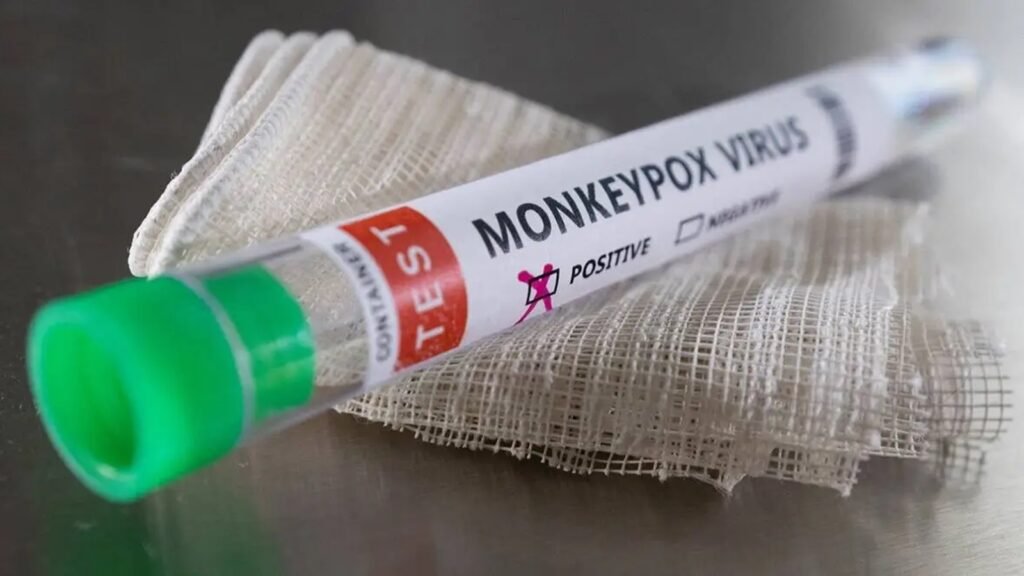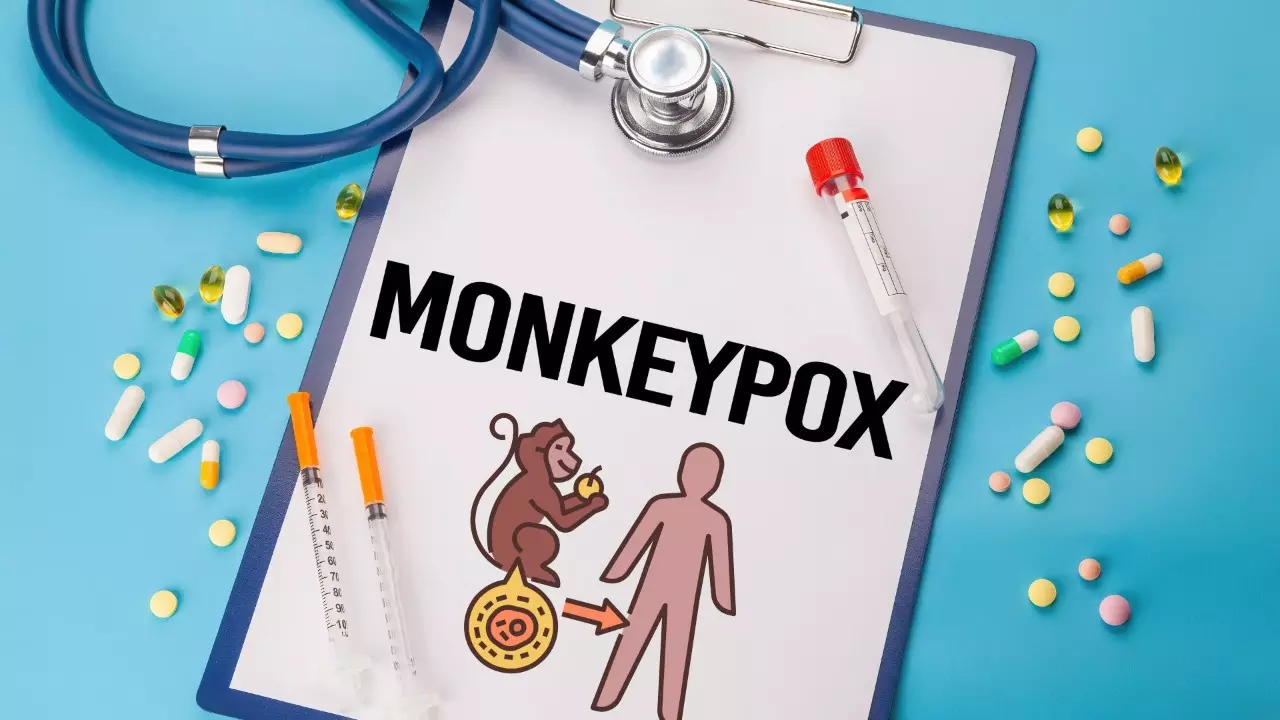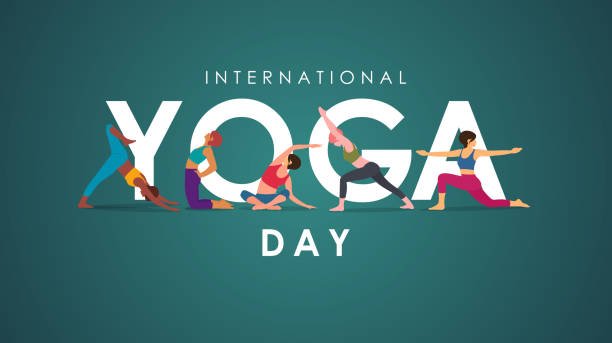“Indian Airports, Borders On Alert As Global Mpox Cases Rise: 10 Points”
Monkeypox has been making headlines recently, causing concern among health officials and the general public. The WHO issued the greatest level of warning when it designated it as a PHEIC, or public health emergency of international concern. PHEIC is defined as “an extraordinary event that may necessitate a coordinated international response and that is determined to constitute a public health risk to other States through the international spread of disease.”
What is Monkeypox?
Monkeypox is a viral infection that belongs to the same family as smallpox. It was first discovered in 1958 in a colony of monkeys used for research, hence its name. However, despite its name, the virus is mostly found in rodents, not monkeys.
The virus causes symptoms similar to smallpox but generally milder. These symptoms typically include fever, headache, muscle aches, fatigue, and swollen lymph nodes. The most distinctive feature is a rash that develops on the face, hands, feet, and sometimes other parts of the body. The rash starts as flat red spots, which then turn into fluid-filled blisters that eventually scab over and fall off.
History and Geographic Spread
For many years, monkeypox was mostly confined to central and west Africa. The first human case was recorded in 1970 in the Democratic Republic of Congo. Since then, several African countries have reported cases, with Nigeria experiencing a large outbreak in 2017.
However, in recent years, monkeypox has been showing up more frequently outside of Africa. In 2003, the United States saw its first outbreak, linked to infected pet prairie dogs. More recently, cases have been reported in various countries across Europe, North America, and other regions where the virus is not typically found.

What Is The Current Status Of Monkeypox? Where Is Its Outbreak?
As of 2024, while the initial surge of cases has subsided, monkeypox remains a concern for health authorities worldwide. The virus has shown its ability to spread in new geographic areas and among populations not previously affected.
The Africa Centres for Disease Control and Prevention declared monkeypox a public health emergency on the continent the day before the World Health Organisation issued its emergency designation. According to WHO, this year’s numbers for cases and deaths in Africa have already surpassed those of previous year, with over 14,000 cases and 524 deaths.
The Concerns Regarding Recent Outbreak
The most recent and concerning outbreak began in May 2022, with cases reported in multiple countries simultaneously. This outbreak was unusual because many cases were not directly linked to travel to endemic areas in Africa, suggesting local community transmission.
Key factors that have contributed to the spread include:
- Increased global travel: As people move around the world more easily, viruses can hitchhike to new locations.
- Declining immunity: With the eradication of smallpox and the cessation of widespread smallpox vaccination, which provided some cross-protection against monkeypox, global immunity has decreased.
- Environmental changes: Deforestation and other habitat changes may be bringing humans into closer contact with animal reservoirs of the virus.
- Improved detection: Better surveillance and diagnostic capabilities mean we’re now detecting cases that might have gone unnoticed in the past.

Why We Need to Stay Alert?
While monkeypox is generally less severe than smallpox and rarely fatal, there are several reasons why we need to remain vigilant:
- Potential for Spread: The recent outbreaks have shown that monkeypox can spread in communities where it wasn’t previously common. This means we need to be prepared for potential cases anywhere in the world.
- Symptoms Can Be Serious: Although most people recover from monkeypox without complications, the symptoms can be quite uncomfortable and may leave scarring. In rare cases, particularly in individuals with weakened immune systems, young children, or pregnant women, the infection can be severe.
- Risk of Mutations: Like all viruses, monkeypox can mutate. As it infects more people in diverse geographic areas, there’s a risk it could evolve to become more transmissible or severe.
- Strain on Healthcare Systems: Outbreaks of any infectious disease can put pressure on healthcare systems, particularly if they coincide with other health crises.
- Economic Impact: Measures to control outbreaks, such as isolation of cases and contact tracing, can have significant economic and social impacts.
- Psychological Effects: The emergence of a new infectious disease threat can cause anxiety and stress in communities, especially in the wake of the COVID-19 pandemic.

What’s Being Done?
Health organizations worldwide are taking monkeypox seriously. The World Health Organization (WHO) and national health agencies are monitoring the situation closely. Efforts are focused on:
- Surveillance and early detection of cases
- Contact tracing to prevent further spread
- Public education about symptoms and prevention measures
- Research into improved treatments and vaccines
A vaccine originally developed for smallpox has shown effectiveness against monkeypox and has been approved for use in several countries. Antiviral treatments developed for smallpox may also be useful in treating monkeypox.

How to Prevent & Protect Yourself
While the risk to the general public remains low, there are steps you can take to protect yourself:
- Practice good hygiene, especially handwashing
- Avoid close contact with people who have a rash that looks like monkeypox
- Don’t touch or share items used by someone with monkeypox
- Stay informed about monkeypox in your area
- If you develop symptoms, isolate yourself and seek medical attention
Conclusion
Monkeypox serves as a reminder that in our interconnected world, we need to stay alert to emerging infectious diseases. While it’s not cause for panic, it does warrant our attention and preparedness. By staying informed, supporting public health efforts, and taking sensible precautions, we can all play a part in controlling the spread of monkeypox and other potential health threats.
As we’ve learned from recent global health challenges, early action and ongoing vigilance are key to managing infectious diseases effectively. Let’s use the lessons we’ve learned to stay ahead of monkeypox and keep our communities healthy and safe.
















BaddieHub I truly appreciate your technique of writing a blog. I added it to my bookmark site list and will